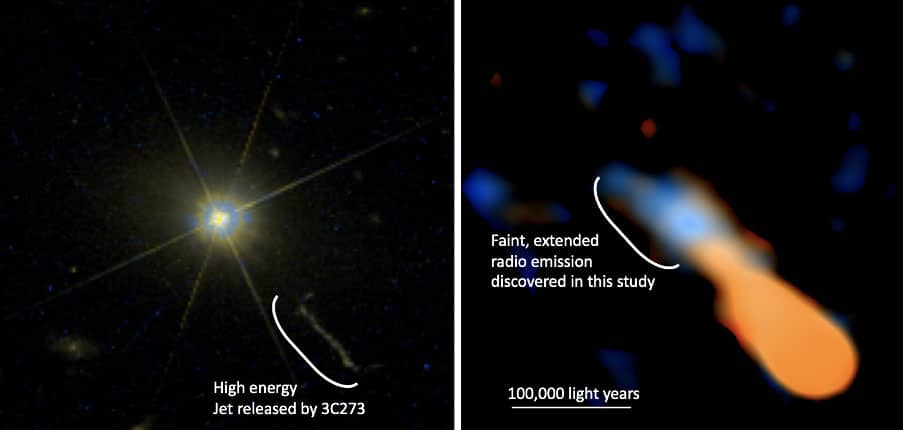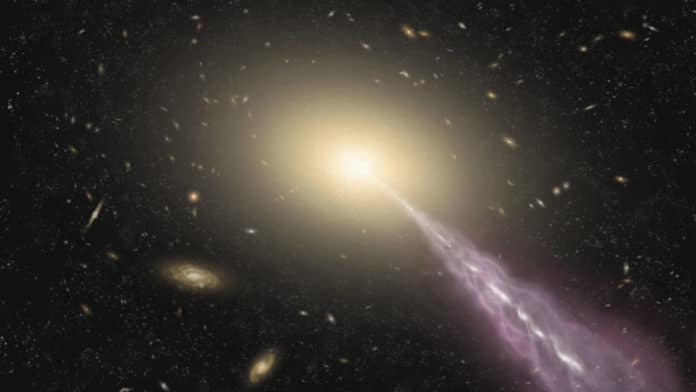A team of astronomers in Japan, for the first time, discovered a faint radio emission covering a giant galaxy as a result of achieving high imaging dynamic range. Radio emission is emitted by the gas created directly by the central black hole.
Using the same technique to additional quasars, the team hopes to learn more about how a black hole interacts with its host galaxy.
Using the Atacama Large Millimeter/submillimeter Array in Chile (ALMA), astronomers targeted the quasar 3C 273, which lies at 2.4 billion light-years from Earth. It is the first quasar ever discovered, the brightest, and the best studied. However, much less has been known about its host galaxy itself because combining the faint and diffuse galaxy with the 3C273 nucleus required such high dynamic ranges to detect.
Hence, the team used self-calibration to reduce the leakage of radio waves from 3C273 to the galaxy. They reached an ALMA record for extragalactic objects with a dynamic imaging range of 85000.
The team observed faint radio emissions stretching for tens of thousands of light-years over the host galaxy of 3C273 due to reaching a high imaging dynamic range. Synchrotron emission, which occurs from very energetic events like bursts of star formation or ultra-fast jets originating from the core nucleus, is frequently found around quasars.
In 3C273, a synchrotron jet can also be observed in the lower right of the photos. The brightness of synchrotron emission varies with frequency, whereas the faint radio emission detected by the team had a consistent brightness irrespective of the radio frequency.

After considering alternative mechanisms, the team found that this faint and extended radio emission came from hydrogen gas in the galaxy energized directly by the 3C273 nucleus. This is the first time that radio waves from such a mechanism are found to extend for tens of thousands of light-years in the host galaxy of a quasar. Astronomers had overlooked this phenomenon for decades in this iconic cosmic lighthouse.
The radio waves detected in this study emanate from the same gas and are not absorbed by dust due to simple processes. Radio waves make measuring the ionized gas produced by 3C273’s nucleus easier. The astronomers discovered that at least 7% of the light from 3C273 was absorbed by gas in the host galaxy, resulting in ionized gas with a mass of 10-100 billion times the sun’s. However, 3C273 had a lot of gas soon before the birth of stars, thus, it didn’t appear that the nucleus severely suppressed star formation.
Shinya Komugi, an associate professor at Kogakuin University and lead author of the study published in the Astrophysical Journal, said, “This discovery provides a new avenue to studying problems previously tackled using observations by optical [light.”
Journal Reference:
- Shinya Komugi et al. Detection of Extended Millimeter Emission in the Host Galaxy of 3C 273 and Its Implications for QSO Feedback via High Dynamic Range ALMA Imaging. DOI: 10.3847/1538-4357/ac616e
